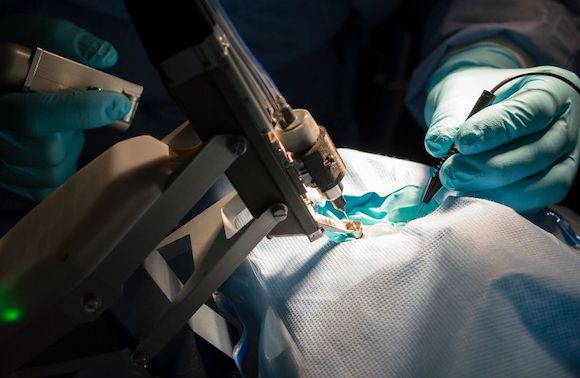
China’s leading intelligent service robot company just announced the release of the first ophthalmic robot for extremely sensitive eye surgeries.
The ophthalmic robot can perform an injection treatment for age-related macular degeneration in one second. At one time, the procedure took over an hour. China needs this advancement as the country is sorely lacking in ophthalmologists, and the National Health Commission of China says the overwhelming majority of doctors in China are under extreme pressure from their workload.
Ophthalmic Service Robot Assists With Surgery
Last year, a robot assisted surgeons with an operation on the human eye for the first time. The breakthrough showed that robot-assisted surgery could be as safe and effective as traditional surgery. Although robots have been used for human surgery before, the human eye stayed off-limits. Surgeons felt it was too small and delicate to let robotic systems work on.
The service robot developed for eye surgeries makes use of a telemanipulation setup. The surgeon holds his traditional instruments in one hand and a joystick in his other. The joystick controls the robot’s arm that holds the required surgical instrument. The surgeon moves the joystick better than he can with his own hand.
Surgeons have really put the ophthalmic service robot to the test. After comparing success rates for robot-assisted vs. standard surgery, they found that the service robot was superior in terms of precision and accuracy.
Ophthalmic Service Robot Assists With Surgery
Last year, a robot assisted surgeons with an operation on the human eye for the first time. The breakthrough showed that robot-assisted surgery could be as safe and effective as traditional surgery. Although robots have been used for human surgery before, the human eye stayed off-limits. Surgeons felt it was too small and delicate to let robotic systems work on.
The service robot developed for eye surgeries makes use of a telemanipulation setup. The surgeon holds his traditional instruments in one hand and a joystick in his other. The joystick controls the robot’s arm that holds the required surgical instrument. The surgeon moves the joystick better than he can with his own hand.
Surgeons have really put the ophthalmic service robot to the test. After comparing success rates for robot-assisted vs. standard surgery, they found that the service robot was superior in terms of precision and accuracy.
leave a comment: